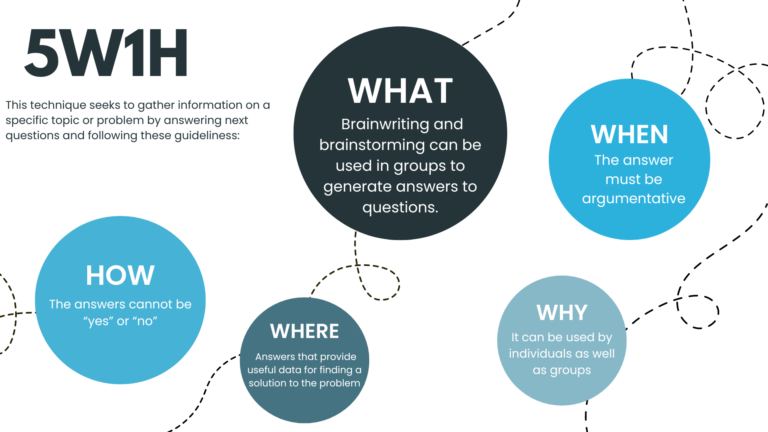Tools and techniques for idea generation
There are various tools and techniques that can be used with a group of people to stimulate idea generation – including these.
This type of ideation technique, normally developed during group sessions, allows a large number of ideas to be collected in a short space of time. During these processes the quantity of ideas is valued more than the quality of them, so it is advisable not to judge one’s own or others’ ideas in the first instance. The main difference between a brainstorming and a brainwriting is that the latter technique is done in writing, organized in different rounds in which participants write down their ideas on paper and then exchange roles with other participants. For this reason, it is more advisable to encourage the participation of more introverted members. There are different brainwriting techniques, with Method 6-3-5 being one of the most popular.

It is specially designed to analyze a problem or challenge from all possible perspectives, in order to analyze the situation and produce innovative and favorable solutions. The hat metaphor works nicely because it is easy to take off or put on a hat, thereby allowing that person to change hats and think about the issue from yet a different perspective.
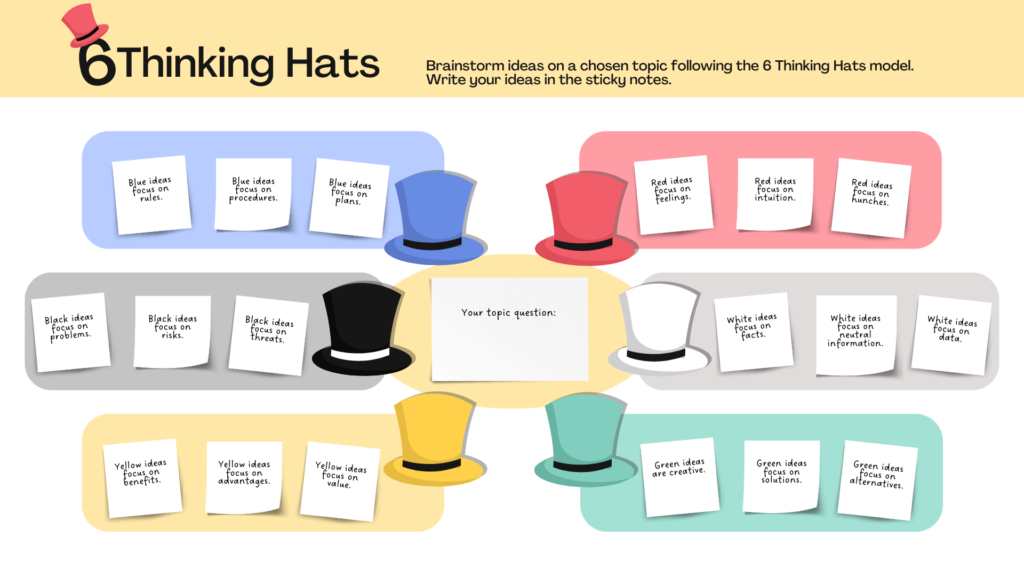
This technique is based on the premise that any product/service/experience can be subjected to an innovation process by asking the following questions about it:
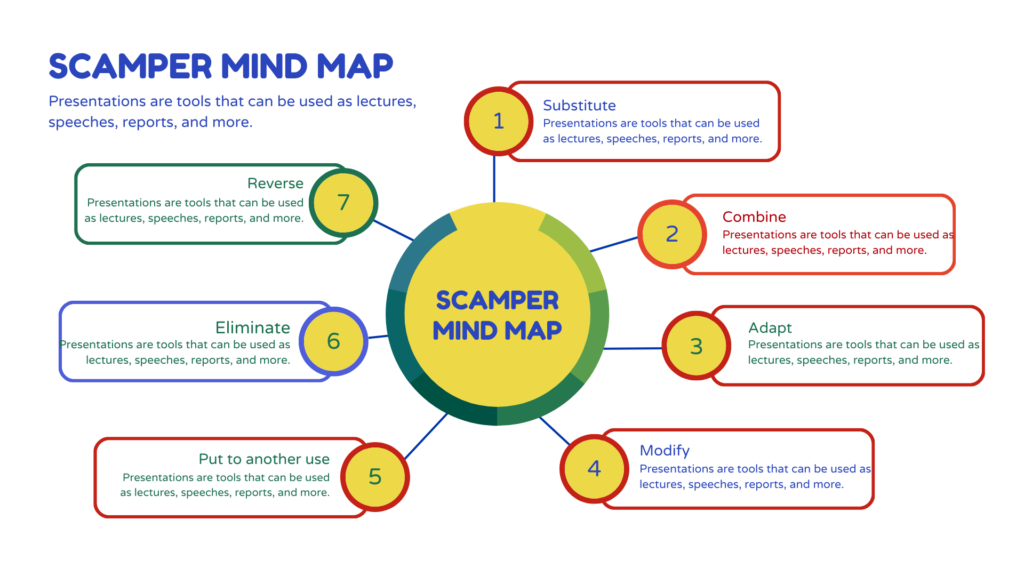
Can be defined as the ability to think outside the box, i.e. a deliberate and systematic way of solving problems through an indirect and creative approach that involves looking at problems from diverse and unexpected angles and from completely different perspectives. It allows thinkers to discover novel solutions that would otherwise go unnoticed by introducing specific and unconventional thinking techniques. Lateral thinking is concerned with what might be rather than what is possible. In this sense, training our lateral thinking does not allow us to break free from our preconceived ideas and mental patterns, and it is specifically concerned with the generation of new perceptions, ideas, and creative solutions.
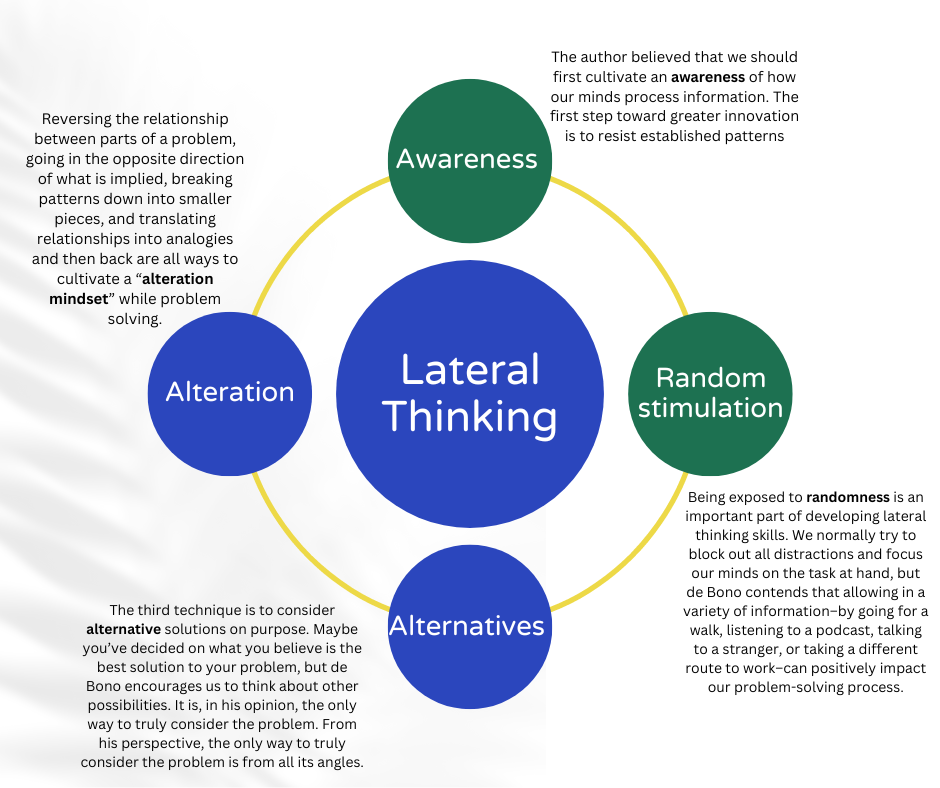
Is used to investigate unrelated ideas in order to gain new insights into your design problems. These insights may assist you in reshaping a well-known concept into something entirely new in a new context. Analogies force the design team to think on a different level, which aids in the discovery of new inspiration and ideas for a specific concept. Analogies can assist the team in seeking inspiration for problem-solving as well as redesigning the design problem to generate novel design solutions. To generate analogies, follow these six simple steps:
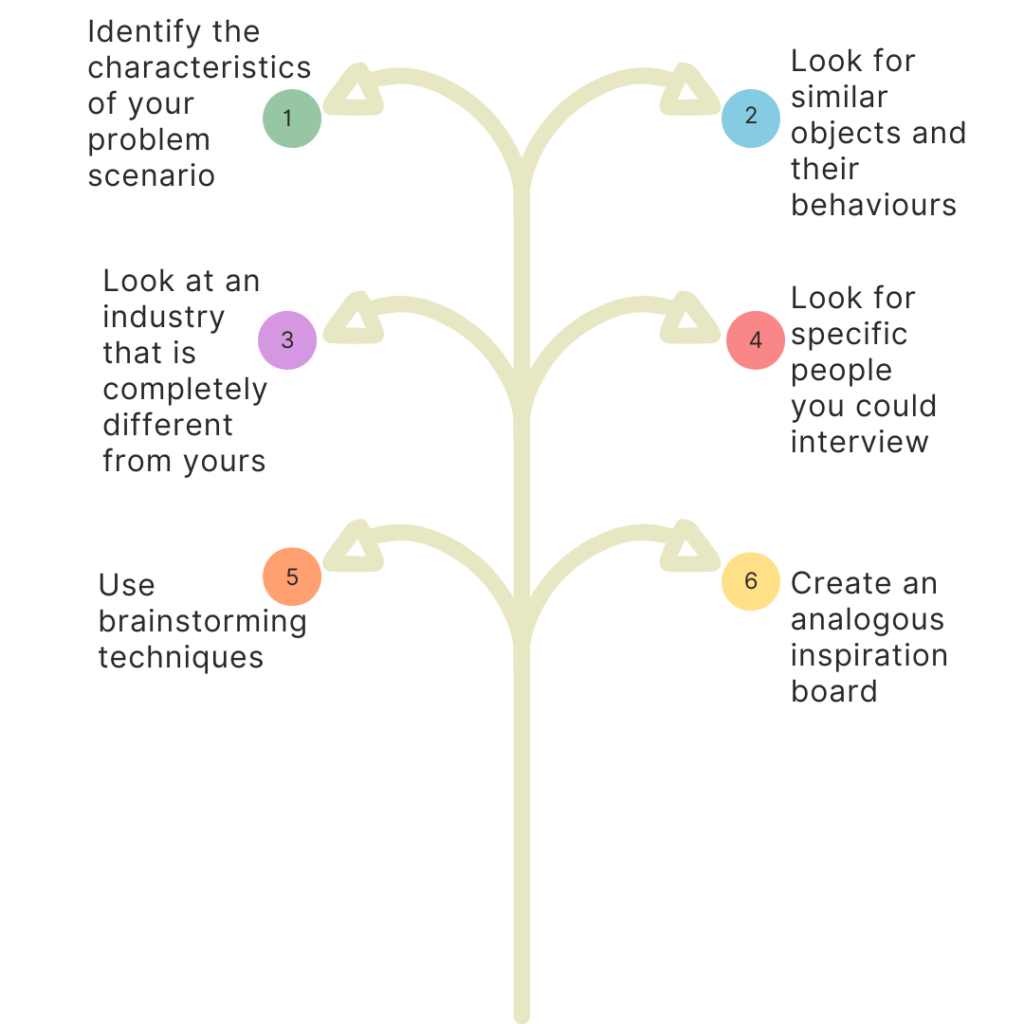
It is beneficial to think twice about the features and functionalities of a product or service for which you are looking for a solution. The questions you ask may seem silly, but they will force you and your team to think about it from a new angle and come up with an even better solution! This technique can be completed in three simple steps:
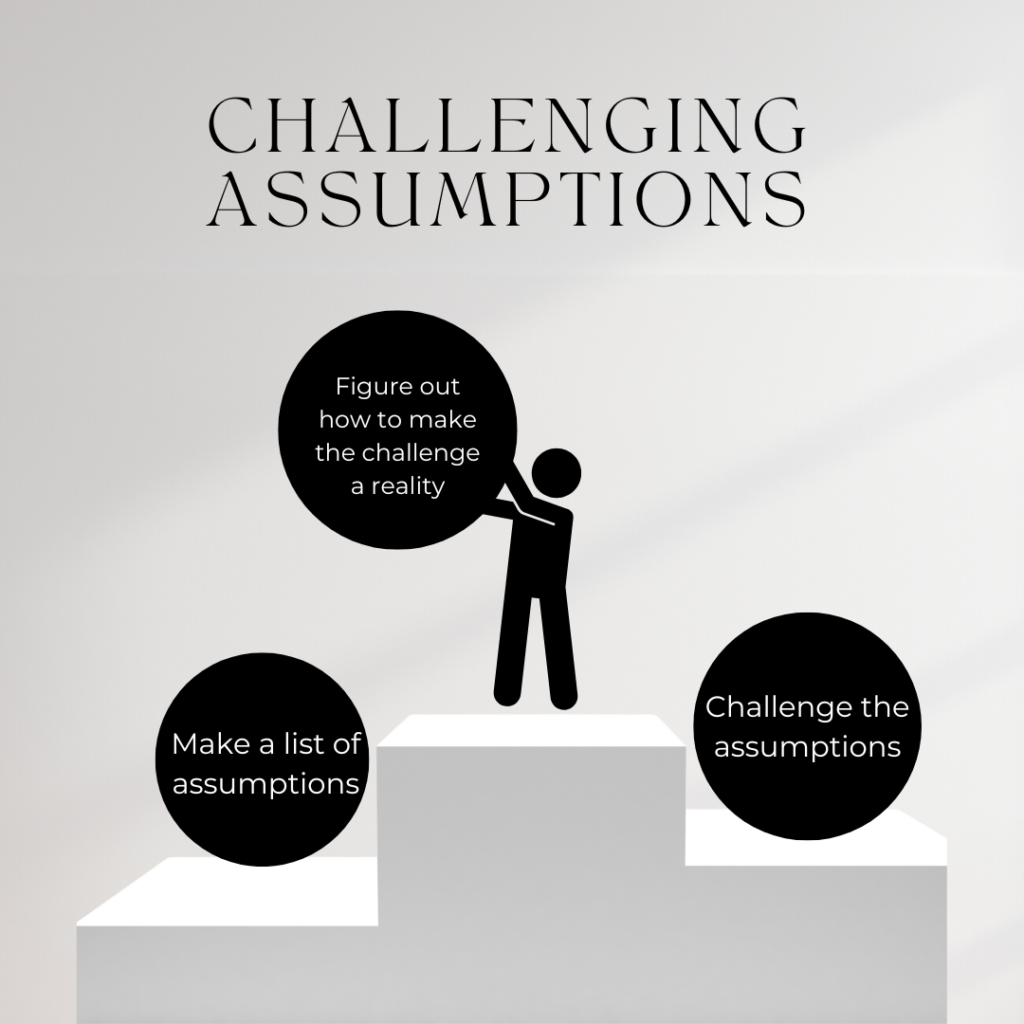
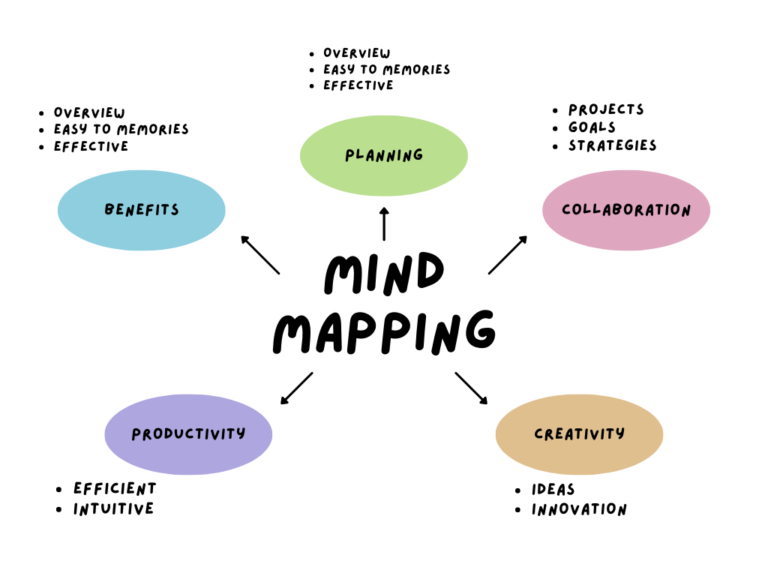
A mind map is a diagram which contains words, concepts or ítems arranged around a central concept. It visually structures ideas to aid in analysis, and turn long lists of information into a more visual, organised and colourful representation. It uses Organical brainstorming and is unstructured and without order. The key challenge is places in the middle of the paper after which ideas that come to mind are written down and connections made. Some online tools such as MIRO may be useful for collaborative mind mapping in a digital environment.
This technique is carried out by generating the worst possible idea or solution for the current design problem. By coming up with the worst possible idea, you will relieve participants’ pressure to come up with a great idea. As you can see, no one will judge you if you come up with incorrect and impossible ideas. As a result, it relieves stress and anxiety and boosts a person’s confidence to speak up. It could be also used as an ice-breaker activity in order to create a safe and comfortable space for participants to speak their minds in further steps of the ideation process.
This set of techniques is only an approximation of the tools you can use. Feel free to explore other creativity techniques and try out the ones you find most appropriate for your needs. Don’t be afraid to experiment with them – the more ideas you come up with, the more chances you have to generate a brilliant idea for your green business!


